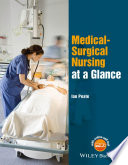Eastern Roman Mounted Archers and Extraordinary Medico Surgical Interventions at Paliokastro in Thasos Island During the ProtoByzantine Period 1st Edition by Anagnostis P Agelarakis ISBN 9781789696028 178969602X
$50.00 Original price was: $50.00.$25.00Current price is: $25.00.
Eastern Roman Mounted Archers and Extraordinary Medico Surgical Interventions at Paliokastro in Thasos Island During the ProtoByzantine Period 1st Edition by Anagnostis P Agelarakis – Ebook PDF Instant Download/Delivery: 9781789696028, 178969602X
Full download Eastern Roman Mounted Archers and Extraordinary Medico Surgical Interventions at Paliokastro in Thasos Island During the ProtoByzantine Period 1st Edition after payment

Product details:
ISBN 10: 178969602X
ISBN 13: 9781789696028
Author: Anagnostis P Agelarakis
Procopius’ History of the Wars, and the Strategikon offer important aspects of Eastern Roman military tactical changes adopted against their enemies that brought the mounted archer-lancer to domineer in the synthesis of the army, along with concise descriptions of their training, panoply, and effectiveness in the battlefield during the later ProtoByzantine period. Yet, evidence in the archaeo-anthropological records of these highly specialized military members has remained elusive.
A recent archaeological discovery at the strategically positioned, upland, site of Paliokastro in Thasos island, Greece, and the subsequent study of the human skeletal remains interred in four monumental funerary contexts, in a dedicated naiskos building, provide for the first time through the archaeological record of the region a unique insight of the mounted archers and their female kin during the turbulent ProtoByzantine period. The interdisciplinary study of the anthropological materials focusing on skeletal developmental, acquired skeleto-muscular manifestations and skeleto-anatomical changes recovered valuable evidentiary data on aspects of their in vivo long-term training and preparation, traumatisms and pathologies along with extraordinary traces of cranial and infra-cranial surgical interventions and medical regimens by the hands of a most experienced surgeon.
In conjunction with the archaeological and anthropological evidence, historical and medical history records are integrated aiming toward a nexus with the human dynamics that transpired at Paliokastro within the context of the catastrophic consequences of the ‘barbarian’ invasions in the Aegean Thraco-Macedonia, and the ravages afforded by the Justinian plague during the later component of the ProtoByzantine period
Eastern Roman Mounted Archers and Extraordinary Medico Surgical Interventions at Paliokastro in Thasos Island During the ProtoByzantine Period 1st Edition Table of contents:
Figure 1. Thasos island in a regional map of the Eastern Roman Empire, rendering by Argie Agelarakis.
Figure 2. Map of Thasos island, with the location of its capital city Limenas, its villages and settlements, and the location of Paliokastro (see arrow) in the region of Rachoni village, rendering by Argie Agelarakis.
Figure 3. Seaward view of Rachoni region and location of Paliokastro site.
Figure 4. Field of view just above the olive groves of Rachoni village, at a lower elevation than the site of Paliokastro.
Figure 5. Uncovering the slab stones from the graves within the naiskos’ floor.
Figure 6. The four graves within the naiskos’ floor.
Figure 7. North, long, wall of grave No. 2.
Figure 8. Pessokranon, decorative architectural component of naiskos.
Figure 9. Thasos archaeological Museum laboratory; Adelphi student assistants during the skeletal analysis.
Table 1. Basic archaeological proveniences and demographic profile of Paliokastro population sample.
Figure 10. Anthropological remains in situ.
Figure 11. Sample case on dental anthropology.
Figure 12. Colles fracture healed, palaeopathological manifestations, and matters of skeletal preservation.
Figure 13. Anterior view of bilateral tibial diaphyseal healed fractures.
Figure 14. Length of tibial callus on its anterior crest.
Figure 15. X-ray imaging of bilateral healed tibial fractures with corresponding loci of the skeletal samples.
Figure 16. X-ray imaging of bilateral healed tibial fractures focusing on the right tibial callus formation.
Figure 17. Degrees of bilateral tibial diaphyseal posterior angulation on the sagittal plane.
Figure 18. Active, in the healing process, and healed periosteal tibial diaphyseal reactions.
Figure 19. Fibular diaphysis showing manifestations of infectious complications.
Figure 20. Bilateral fibular diaphyseal infectious complications, with healed fracture locus (red arrows).
Figure 21. Map of the northern Aegean shores and mainland regional to Thasos island [Excerpt from Weigel, C., (1720), Descriptio Orbis Antique, XLIV Tabulis, Graeciae Septentrionalis Pars, Nuremberg]: (1) Thasos island, (2) Ulpia Topirus (Topirus), (3) An.
Figure 22. Ectocranial left latero-posterior view of cranial component showing surgical intervention.
Figure 23. Ectocranial view of palaeopathological specimen: a) red arrow points to orifice on the mastoid process, and b) surgical preparation dimensions peripheral to trephination.
Figure 24. Cranial palaeopathological specimen with dimensions of two ectocranial loci showing surgical interventions.
Figure 25. Cranial palaeopathological specimen showing surgical interventions, with dimensions of trephined locus.
Figure 26. X-ray imaging of cranial palaeopathological specimen with samples of relevant identifiers.
Figure 27. Close up endocranial view of cranial palaeopathological specimen.
Figure 28. Right frontal bone fragment showing palaeopathological changes within the orbital roof.
People also search for Eastern Roman Mounted Archers and Extraordinary Medico Surgical Interventions at Paliokastro in Thasos Island During the ProtoByzantine Period 1st Edition:
eastern roman architecture
eastern roman empire architecture
ancient roman archers
a roman arch
mounted archers
Tags: Anagnostis P Agelarakis, Eastern Roman Mounted, Extraordinary Medico, Surgical Interventions
You may also like…
History - European History
Sicily An Island at the Crossroads of History Norwich John Julius
History - European History
Medicine - Surgery
The Spine Medical and Surgical Management 2 Volumes 1st Edition Alexander R. Vaccaro
Medicine - Medicine & Nursing Reference
History - Ancient History
Execution by Styrax in Ancient Thasos 1st Edition Anagnostis P Agelarakis
Medicine - Nursing
Medical Surgical Nursing at a Glance 1st Edition by Ian Peate ISBN 9781118902653 1118902653











